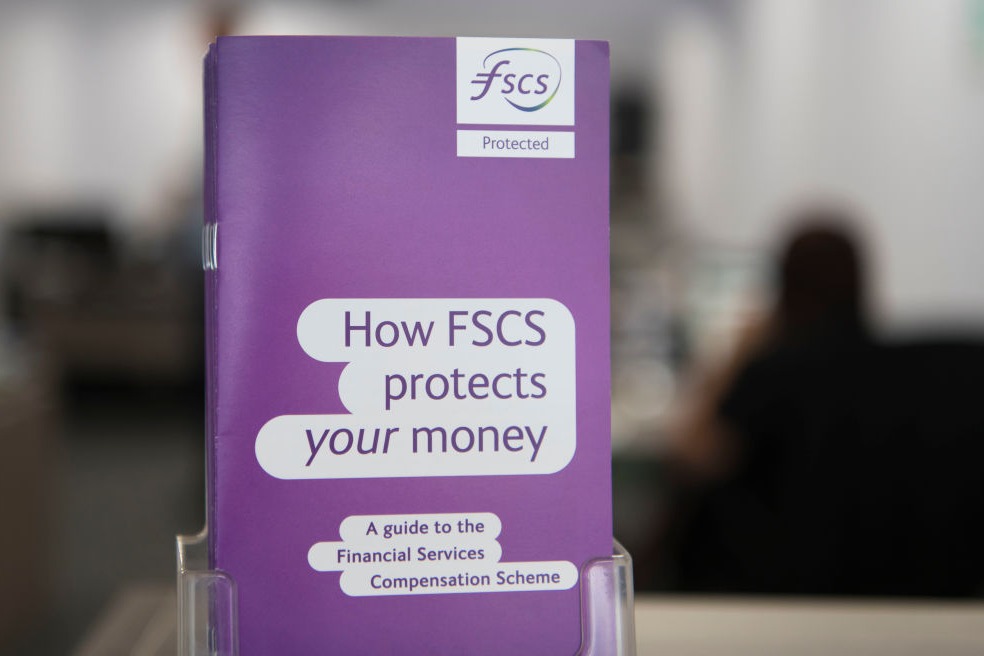
Chancellor Jeremy Hunt made some major changes to Isa rules for the 2024/25 tax year – beginning on April 6. Below we explain how Isas work now and what’s going to be different from April.
According to the HMRC, there were nearly 12 million open Isas in the UK during 2021 to 2022. All these accounts together held nearly £742 billion worth of our savings and investments – making it a tax-free home for many people’s money.
But new rules are coming into effect in April 2024, changing how Isas operate and what you can do with them. And that’s before we get to the the introduction of the British Isa, which could soon give you a further £5,000 boost to your annual allowance.
Below we explain how these accounts work now, the deadline for your allowance this year, and the changes to the Isa rules about to come into force.
This article explores:
Read more: Best cash ISAs
What is the British Isa?
In his spring budget, the chancellor announced a reform to the current structure by introducing the British Isa.
It differs from the other Isas on offer because its £5,000 allowance is separate from your annual Isa limit. This means, if used correctly, your Isa allowance could be boosted to £25,000 a year.
“This will ensure British savers can benefit from the growth of the most promising UK businesses as well as supporting those businesses with the capital to expand,” the chancellor said in his budget.
It’s a reform which was welcomed by UK Finance, the industry trade body, which said it should increase investment in the country.
“We welcome his focus on promoting ownership of UK stocks and helping more people save for the long term,” said , David Postings, Chief Executive of UK Finance.
There is currently no date for when the Isa will be available to the public.
Until 6 June, the government will run a consultation for the British Isa to set out its objectives and implementation. After this period has ended, further details on when it will be available is likely to be released.
Read more: What is the new British ISA? Jeremy Hunt’s budget announcement explained
How do Isas work?
An Isa is a tax efficient home for your investments or savings. Any dividends, profits and interest you make on the money inside this account is exempt from capital gains and income tax.
This allows you to maximise the money you earn from your savings or investments. But there’s a limit on the amount you can deposit into your Isas each tax year, which runs from April 6 to April 5, rather than January to December.
Our video also explains:
Different types of Isas
There are four of different types of Isa you can open, and one planned to come in soon. Which ones are right for you depends on your financial goals, be it looking to save for your kids’ future, buying a house, or saving for retirement. The different types of Isas are:
Isa rules: How much can I contribute?
While an Isa can be a tax efficient home for your money, there are some rules you’ll need to consider before opening your account.
The £20,000 limit
This tax year you’ll be allowed to deposit up to £20,000 across your chosen Isas. The £20,000 limit is known as your Isa allowance, and it must be used before the end of the tax year before it is refreshed. So, if you have some of your allowance remaining you won’t be able to carry it forward into the next year.
However, there are exceptions for certain Isa types:
- The maximum you can save into a lifetime Isa each year is £4,000
- The maximum you can save into a junior Isa every year is £9,000 (although this is for your child and does not impact your own £20,000 allowance)
The allowances are pooled across the different Isa types. So if you contribute the full £4,000 limit in a lifetime Isa, you’ll be left with with £16,000 to invest in other ISA types.
Can I have more than one Isa?
While you can hold as many Isas as you like, there are rules around how many you can pay into at once.
Currently you can’t pay into more than one Isa of the same type in the same tax year.
For example, if you’ve been paying into an easy-access cash Isas and want to open a different one to get a better interest rate, you can’t do that unless you close your current one and transfer everything you’ve paid in already that year to the new one.
Worse, not all Isa providers accept transfers in.
This is the same for stocks & shares Isas. You can’t pay into one account for one sort of asset and another with different provider to access a different type of investment at the same time.
However, as confirmed in the Autumn Budget, this will change from April where you’ll be allowed to subscribe to multiple Isas of the same type.
Can I transfer old Isas to a new provider?
You can move any money you have in an old account across to the new provider as long as it accepts transfers in,
There are no limits on the amount you can transfer. So the money you’re switching could exceed your £20,000 allowance. A transfer also won’t use any of your allowance.
It could also make sense to transfer different pots into one place to simplify your finances, pay less in fees, or get a better interest rate.
Currently, if you want to transfer to a new Isa you must transfer all of the money you’ve already deposited in that tax year. So, consider this example:
Sam has an Isa balance of £100,000 – which has built up over several years. Over this tax year she’s deposited £15,000 into her fund but now wants to switch providers. Under current legislation she must transfer her entire £15,000 balance to her new provider.
This rule is only part of legislation until April. In the new tax year you’ll be able to make partial transfers, which was also confirmed in the Autumn Budget.
Are cash ISAs protected?

If your cash ISA provider is an authorised and regulated by the Financial Conduct Authority (FCA) then it will enjoy the same FSCS protection as traditional savings accounts.
To see if your provider is recognised by the FCA, make sure to search its register.
The Isa deadline 2023/2024
The ISA deadline for 2023/24 tax year is at midnight on 5 April.
Do I have to fill in a tax return for my Isas?
The good news is that you do not have to declare any interest or capital gains on your savings or investments via a self assessment tax return. Remember any gains in your Isa are tax-free.
However, keep in mind this could change in the future.
Read our guide to tax returns for more.
Do I pay tax on Isa withdrawals?
You will still enjoy the tax-free benefits of saving or investing in these accounts when you withdraw any profits, interest or dividend income.
If you hold shares in companies outside an Isa, you have a tax-free dividend allowance of £2,000; earn more than this, and take the cash, and you would pay tax on the payouts. This won’t happen if they are held within an ISA.
In April 2022, tax on dividend income increased by 1.25%. This means that if your investments are held outside an Isa, you would pay this tax at a rate of:
- 8.75% for basic rate taxpayers
- 33.75% for higher rate taxpayers
- 39.35% for additional rate taxpayers
We explain how shares are taxed.
Are Isas exempt from inheritance tax?
You can pass your Isa on to your spouse or civil partner should they outlive you without incurring inheritance tax.
However, at the time of death you must be:
- Living together
- Not separated by any court order
If you fulfil these criteria then your balance will be transferred free of inheritance tax to your spouse or civil partner. This is considered a one-off additional allowance and does not affect the surviving partner’s Isa allowance.
If you leave your Isa to someone other than a spouse or civil partner it can be liable for inheritance tax.
We go into more detail on the inheritance tax rules including how to reduce your inheritance tax bill.
Which Isa is best for me?
Which ISA is right for me?
ISAs work best when you pick the right one for your savings goal. Take this short survey to find out which ISA might be right for you.
- It only takes a couple of minutes
- No personal details required

Cash Isa
There are some circumstances when a cash ISA might be best:
- If you want to earn a guaranteed return
- Easy-access cash Isas are ideal if you are setting money aside for any emergencies, such as a boiler breakdown or car repairs, because you can get access to your money quickly
- Cash Isas appeal to 45% additional-rate taxpayers and savers with bigger balances, especially if you want to make sure any interest stays tax-free
Here are the best cash Isas according to our ratings.
Stocks and shares Isa
There are some circumstances when a stocks and shares Isa might appeal:
- Can be better for those investing for the long term – five years or more – because returns from stock markets tend to outperform those on savings accounts over time
- Suitable for those who don’t mind taking on risk
To find out more about investing, check out our beginners guide.
We also outline the best stocks and shares Isas.
Junior Isa
If you have children, you might want to open a junior Isa.
- These could be great for teaching kids about money and building up a pot of money for when they are older
- Comes in cash and stocks and shares versions depending on your time frame
Lifetime Isa
If you’re saving for your first home or want to put money away for later life, lifetime Isas offer a savings boost. You get 25% added to any money you pay in, meaning up to £1,000 extra a year.
But there are a couple of major conditions.
- You can only open them between the ages of 18 and 40 – although you can keep paying in until you are 50
- There is a 25% penalty to any withdrawals you make unless they are to buy your first home or made after you’ve turned 60
Innovative finance Isa
These work like other Isas, but let you take advantage of a few things that other Isas don’t let you. Primarily peer-to-peer lending and, from April 2024, certain property funds.
The key thing to bear in mind with innovative finance Isas are:
- You won’y get FSCS protection on savings made in peer-to-peer loans
- Investment in the new asset types available from April are illiquid – that means it might take longer than 30 days to access your funds
What about a Help to Buy Isa?
A Help to Buy Isa was the government’s first attempt at helping first-time buyers save. However, this product has now been replaced by the lifetime Isa.
Both types of Isa offer a 25% bonus on savings.
While you can no longer open a Help to Buy Isa, existing holders can keep saving in until November 2029. Any bonus will need to be claimed by November 2030.
Savers can contribute £200 a month and up to £12,000 in order to claim a maximum bonus of £3,000 to buy your first home.
Although it’s possible to have both a lifetime Isa and a Help to Buy Isa, you can only use the bonus from one to buy a home.
The exception to the rule is if you’re buying with another first-time buyer, one of you can use a lifetime Isa and the other can use a Help to Buy Isa to purchase your home together. But bear in mind that both products have different restrictions on the value of the property you can purchase:
- Help to Buy Isas have a property value limit of £250,000 outside of London and £450,000 within London.
- Lifetime Isas have a property value limit of £450,000 regardless of where you’re buying.
Check out our pick of the top Lifetime Isas.
British Isa
The British Isa is the newest form of Isa and was announced in the chancellor’s spring budget. It allows every individual to top up their annual allowance by a further £5,000 – effectively taking their threshold to £25,000.
To take advantage of this allowance, this figure must be invested in UK based assets. The initiative was launched in support of the government’s plan to grow the UK economy, with the chancellor stating that it will allow British savers to take advantage of the most promising local businesses.
Can you lose money in an Isa?
While cash Isas benefit from FSCS protection, the value of your stocks & shares Isa or innovative finance Isa can go up or down.
If you have a junior Isa or lifetime Isa invested in stocks and shares, the value of your funds can also go up and down.
Investing in the financial markets always comes with a degree of risk – you could lose some or all of your money.
However, history shows us that if you diversify your investments and leave your money invested for at least five years, it is more likely to grow.
Important information
Some of the products promoted are from our affiliate partners from whom we receive compensation. While we aim to feature some of the best products available, we cannot review every product on the market.





